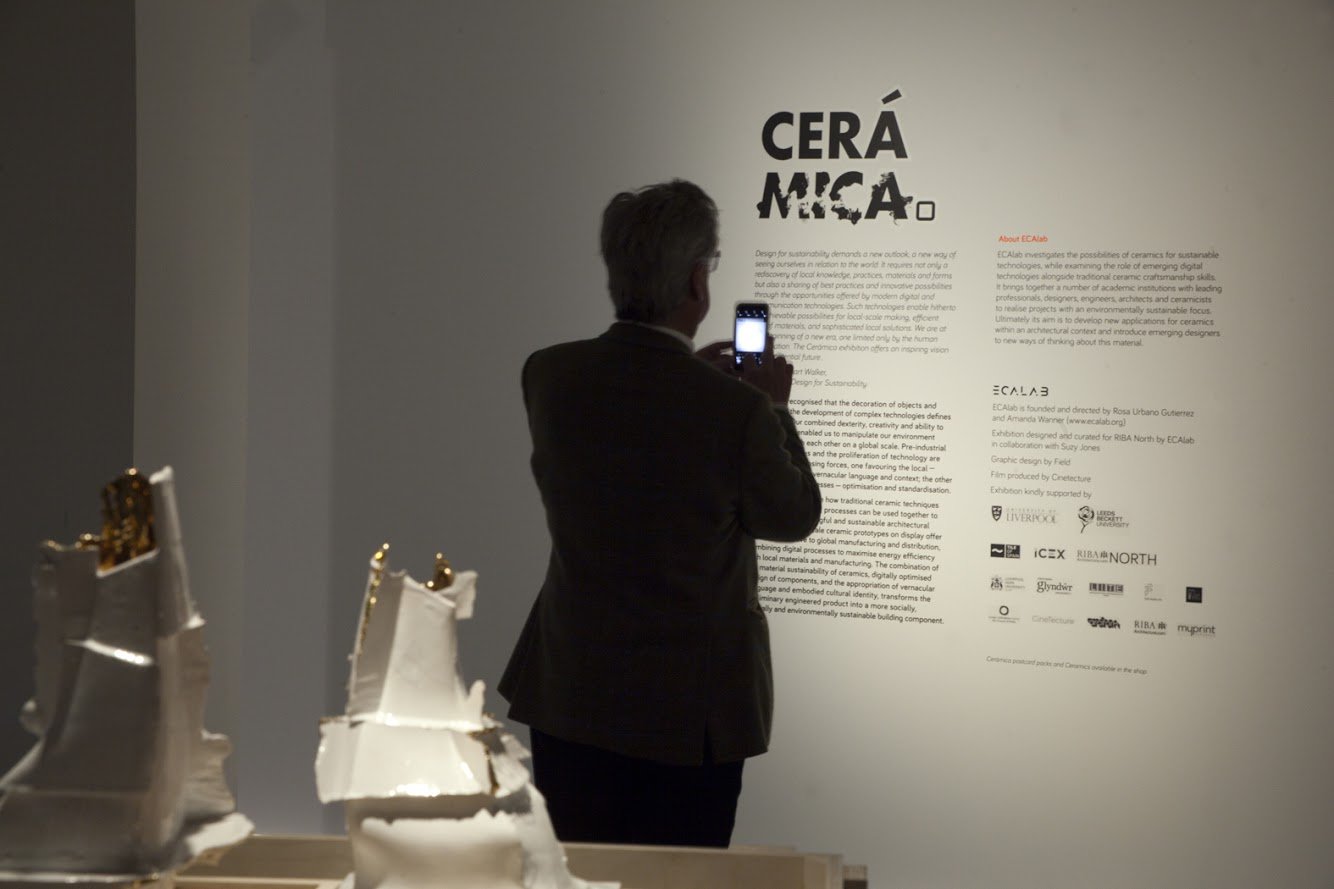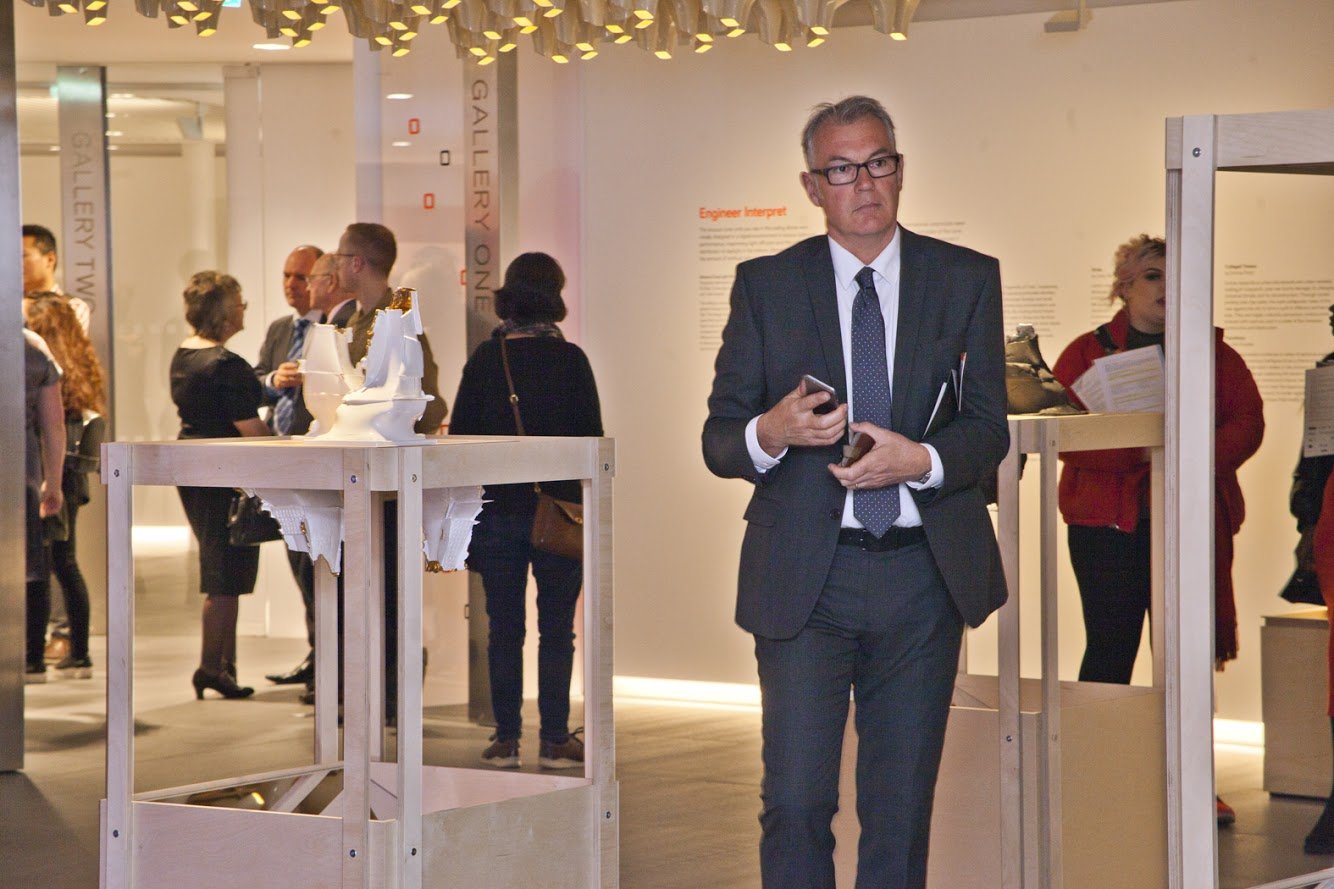A collaboration between ECAlab and a selection of national and international ceramicists examining how traditional ceramic techniques and digital engineering processes can be used together to produce more meaningful and sustainable architectural elements. It is widely recognised that the decoration of objects and spaces, and the development of complex technologies defines our species. Our combined dexterity, creativity and ability to cooperate has enabled us to manipulate our environment and connect with each other on a global scale. Pre-industrial making techniques and the proliferation of technology are often seen as opposing forces, one favouring the local – the development of vernacular language and context; the other favouring global processes – optimisation and standardisation.
Cerámica featured full-scale prototypes of light-diffusing facades and ceilings hosting individual vernacular languages, supporting heritage and local identity, and transforming a preliminary engineered product into a more socially, ethically and environmentally sustainable building component. Each artist reinterpreted an optimised object developed in a scientific environment to explore the expressivity of clay and its potential for cultural embodiment and transformation through the hand of the craftsman.
Jo Keogh questions industrial methods of mass production to create sublime and highly individual pieces. Standardised plaster moulds are butchered and tethered back together to expose spine-like projections formed by the moulding seams. Thin, fragile, sharp slip cast porcelain edges with glowing gold lustre are juxtaposed against black stoneware slab works which reflect the light with silver leaf. Photography courtesy of Chema Castello.








